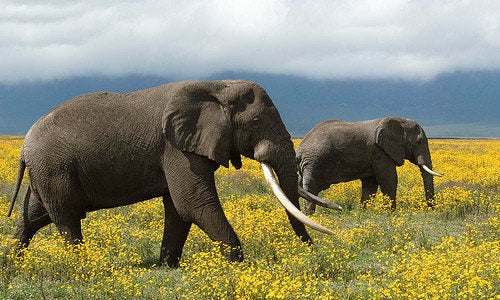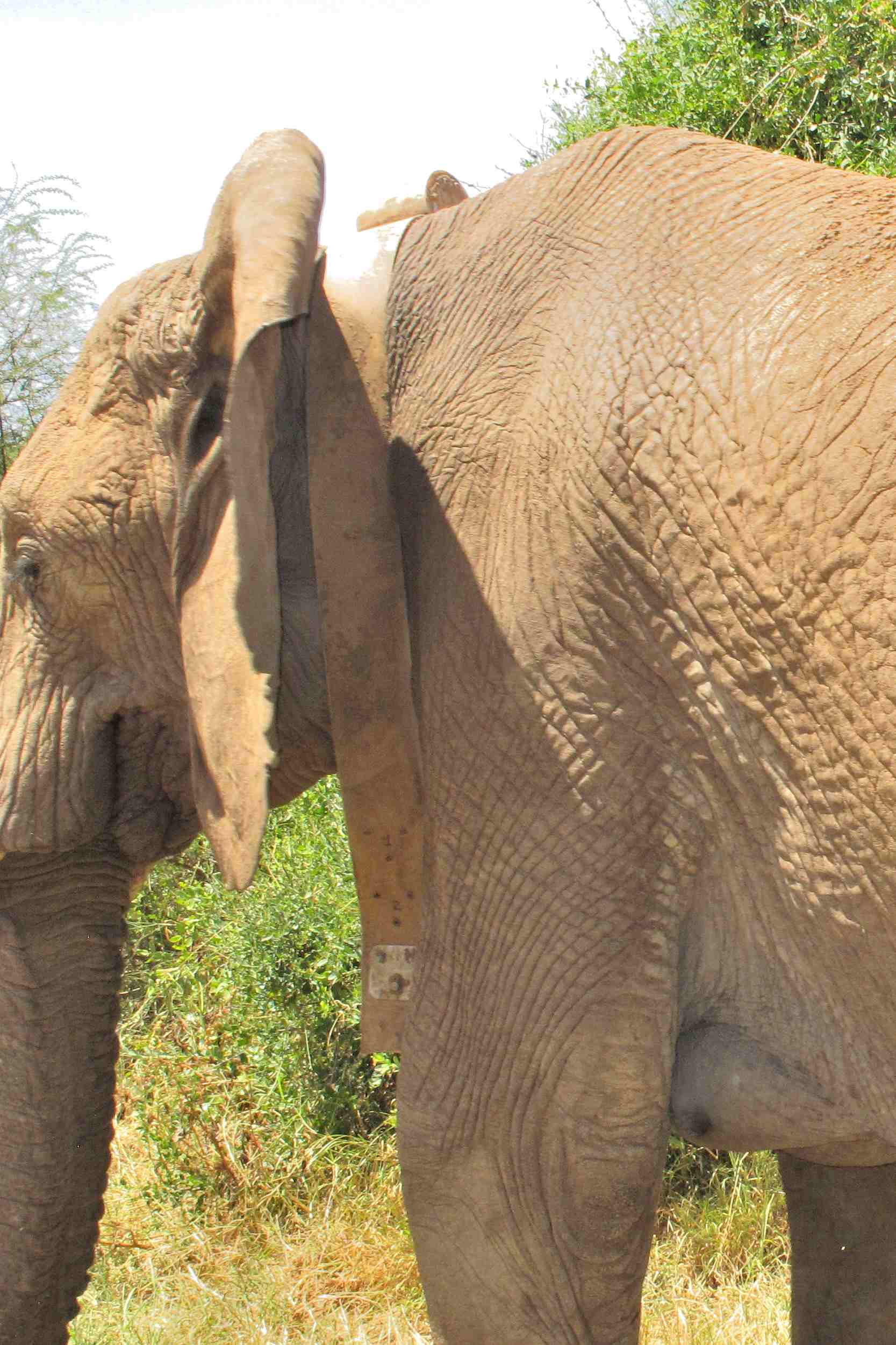
Researchers are trying to build an "alarm collar." It's a new kind of collar that can show if an elephant is up, down, or running. They hope to eventually use that information to more quickly dispatch rangers to try to catch poachers before they get too far.
Putting on the collar. Photo by Carl Safina.
Today, in the course of developing a book about the lives of animals, I accompanied researchers from Save the Elephants, Oxford University and the Disney Worldwide Conservation Fund, and veterinarians from the Kenya Wildlife Service as we put a test model of one of those collars on an elephant in Samburu Game Reserve, Kenya.
Hundreds of elephants use the reserve. They live in dozens of family groups. Elephant family groups are pretty stable over decades -- an older mature female who is the matriarch and leader, her daughters, and all their juvenile children. But increasingly, the family groups are shattering as poachers kill matriarchs and many others, leaving wandering orphans trying to join remaining groups.
Last night we discussed which elephants would be good candidates for the test. No matriarchs, because on rare occasions, an elephant dies from the tranquilizing drug, and matriarch knowledge and leadership are simply too important to the entire family to risk. A young adult female from a well-known group that tends to stay on the reserve is a good candidate. The researchers have named all the adults in all the families that regularly use the reserve. So after some discussion, they put several names on a list.
At dawn we left the Save the Elephants' camp in several vehicles and fanned out, looking for elephants. The idea was to find them early as they were coming downslope from where they've been sleeping, before they got near the river. We didn't want a darted elephant going down in the water. And because a flood more than a year ago washed out a bridge that hasn't been rebuilt, we didn't want a darted elephant to cross the river, where we would not be able to follow or administer the antidote.
We found one group two miles from the river. This family is named The Winds. They were on a fast walk to water, and by the time the veterinary truck arrived, they were too close to the water. And in fact, they plunged in, drank, and crossed.
About an hour later we found another group, The Artists. They'd already been to the river, come back up on our side, and were feeding placidly. The researchers are incredibly expert at identifying several hundred elephants by the pattern of nicks and tears in their ears, and within The Artists, an adult female named Flaubert was on the list.
Because the process poses risks to the elephant, the scientists are always tense about darting them. When the dart hit her rump, she suddenly put her head up, trying to figure out what just happened. This mildly alarmed her calf and the alarm spread through the family. They started to move away from the vehicles.
Flaubert began lagging. Her calf was keeping up with the others. When she went down and lay on her side, we surrounded her with the vehicles. By the time her family had turned around to see what was wrong with her, we were already there and chased them off.
No one likes this work. It's stressful for the elephants and the researchers. No one likes bothering them, and the risks of things going wrong make the whole darting procedure a fraught affair.
But this time it went perfectly. Forty minutes after we darted her, she had her collar on and had rejoined her family group and her calf.
Up and about. Photo by Carl Safina.
Over the next couple of weeks, researchers will use the collar's signals to find her, then they'll video her activities and see if the information from the test collar is correctly informing them of what she is doing.
The hope is that this will help in the fight against poaching, but it's a long-term strategy in an emergency situation. About 30 elephants from this population have been killed in the last two months.
The new kind of collar may help locate poachers. But to save elephants, conservationists and researchers will have to use every available strategy, from new technology to community outreach to international diplomacy.
When we left The Artists, Flaubert and her calf were in the river together with other family members, drinking peacefully.


